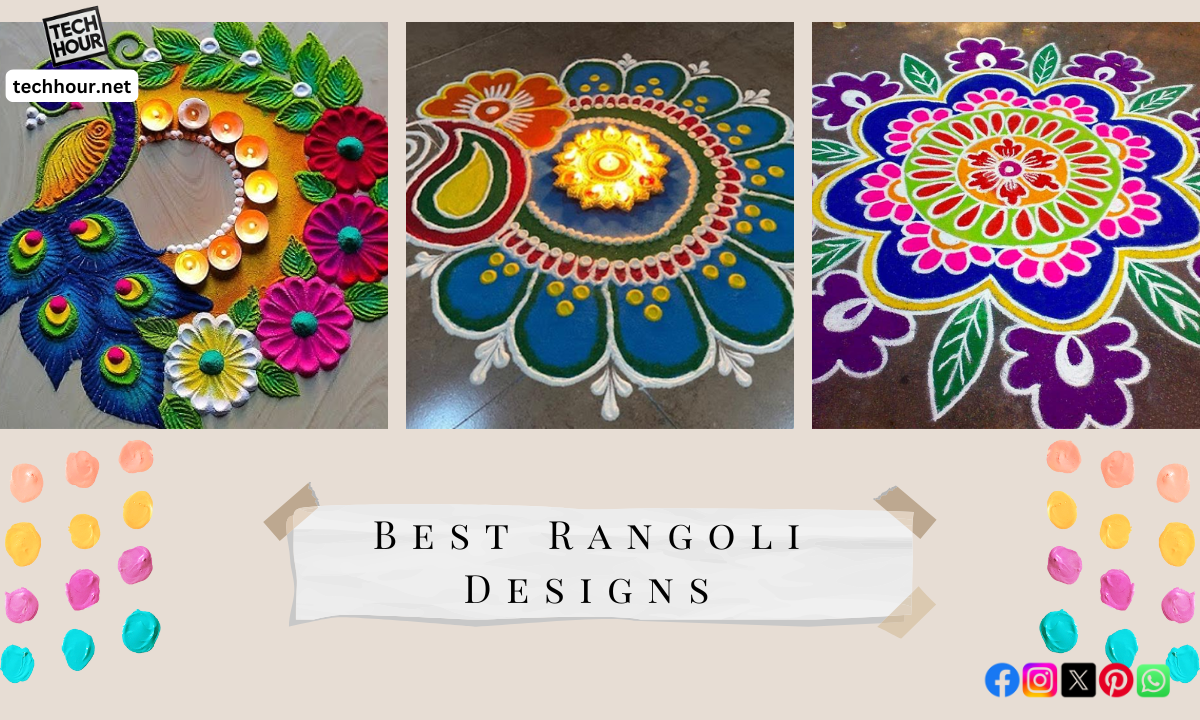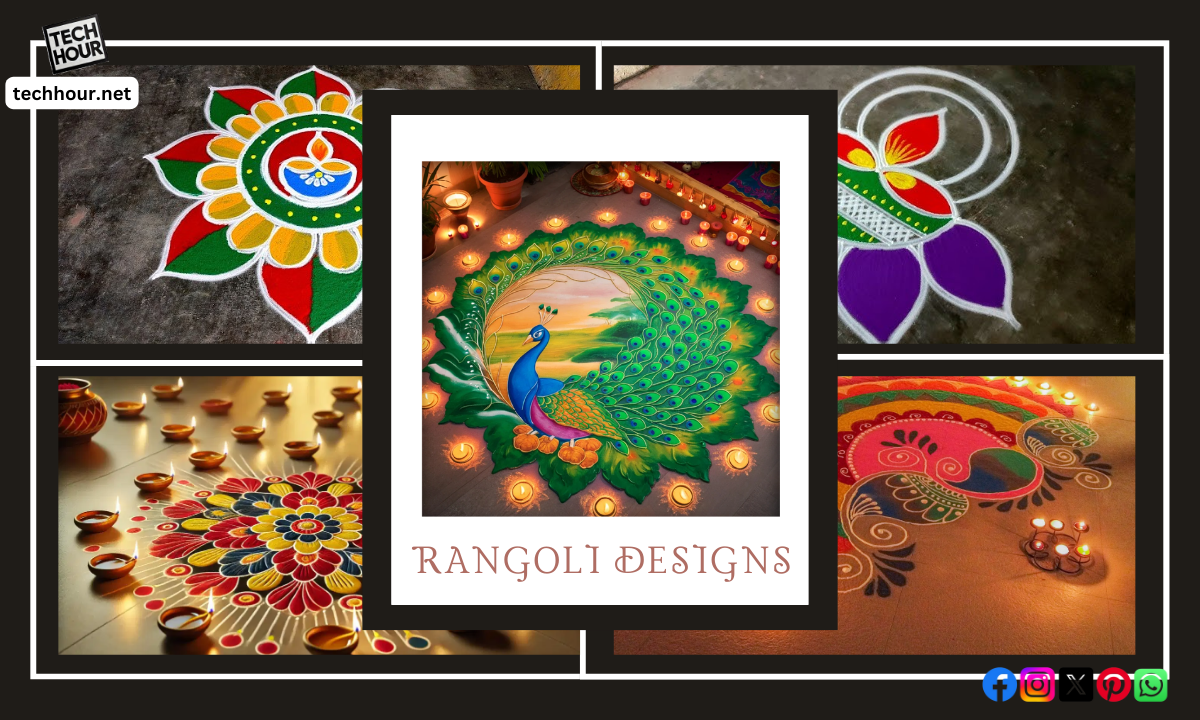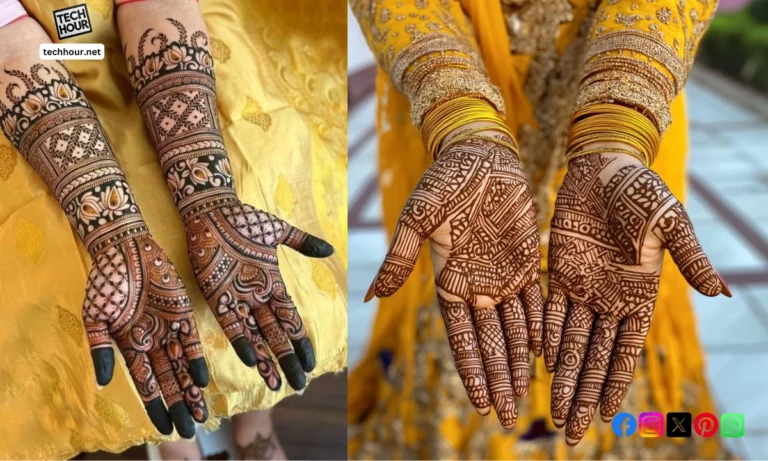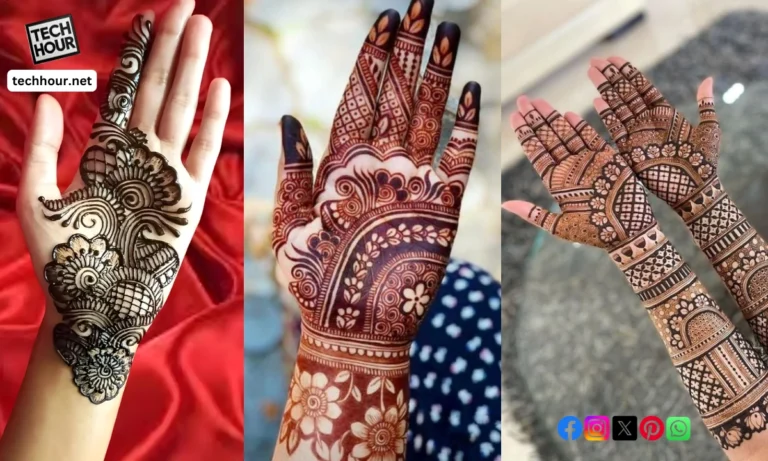Rangoli designs are an important part of Indian culture, blending art and tradition beautifully. You might see these colorful patterns at festivals, weddings, and special occasions, greeting guests and creating a festive atmosphere.
Rangoli not only adds aesthetic value to your space but also carries deep spiritual significance, symbolizing welcome and positivity.

Creating rangoli is a way to express your creativity while honoring tradition. Using colored powders, flower petals, or even rice, you can craft intricate designs that tell stories or reflect personal beliefs.
From simple to complex patterns, everyone can find a style that resonates with them and suits their skill level, making it a rewarding and enjoyable experience.
As you explore the world of rangoli, you will discover various styles and techniques that reflect the rich diversity of Indian culture. Each design can carry its own meaning, connecting you to the spiritual elements of the festivity.
Embrace the beauty and creativity of rangoli, and you will find that it enhances your celebrations while offering a sense of connection to a timeless tradition.
The Art of Rangoli Design
Rangoli design is more than just decoration; it’s a beautiful representation of culture and creativity. This traditional art form takes various shapes and forms, drawing on history, materials, and styles that highlight its significance during festive occasions.
Historical and Cultural Significance
Rangoli has deep roots in Indian tradition, often made during festivals like Diwali and celebrations honoring Goddess Lakshmi. The patterns symbolize auspiciousness and are believed to attract good luck and blessings to your home. In many regions, rangoli is known by different names, such as alpana in Bengal and kolam in South India.
Rangoli art serves as a way to connect with cultural heritage while showcasing creativity. Each design has its meaning, often incorporating geometric shapes, floral patterns, and images from nature that reflect the rich diversity of Indian culture.
You will find that creating rangoli not only beautifies your space but also fosters community spirit during celebrations.
Materials and Techniques
Creating colorful rangoli involves using various materials, including rangoli powder, flower petals, sand, and colored stones. These materials allow you to produce vibrant and intricate designs tailored to your personal creativity.

Common techniques include freehand drawing and stenciling. You might use your fingers or a funnel to help control the placement of the materials. This hands-on approach gives you the freedom to express yourself while adhering to traditional patterns.
During festivals, you will often see families engaging in this art together, making it a communal activity filled with joy.
Style Variations
Rangoli designs are rich in variety, reflecting the regional differences across India. You may prefer floral rangoli, which uses flower petals to create delicate designs, or opt for geometric patterns, which can be bold and modern.
Some popular styles include muggu from Andhra Pradesh and chowk puran from Maharashtra. Each style emphasizes creativity while holding onto traditional significance.
By experimenting with different styles, you can find the expression that resonates most with you and your celebrations.
Designing Rangolis for Different Occasions
Rangoli designs can brighten up any space, making them perfect for various festivities and daily enjoyment. Understanding the context of each occasion helps you choose the right style and complexity for your designs.
Diwali Specials
During Diwali, rangoli holds special significance. It is common to create vibrant patterns that welcome Goddess Lakshmi, symbolizing prosperity.
You can opt for flower rangoli designs filled with rich colors like red, yellow, and green to create a festive look.
Simple rangoli designs with traditional elements such as swastikas can also be effective. You might use corner rangoli designs to accentuate entrances or corners of your home.
Using materials like colored powders or flowers adds beauty and uniqueness.
Don’t hesitate to create large, flowing free hand rangoli designs, which can be more spontaneous and expressive while still paying homage to the occasion.
Routine and Festive Creations
For everyday and other festive occasions, you can focus on easy rangoli options that require less time but still look stunning.
Easy rangoli designs often involve fewer colors and simpler shapes, making them accessible for everyone.
Using combinations of dots can help form intricate patterns. 3 or 5 dot designs are great for beginners and can result in beautiful patterns without much effort.
You could also create a flower rangoli with a minimalistic look, focusing on just a few petals or shapes. This can fit comfortably into your daily routine and be perfect for smaller celebrations or welcoming guests.
Incorporate both simple designs and a bit of creativity to make every occasion feel special with your rangoli art.
FAQs
You may have questions about creating rangoli designs, materials needed, and current trends. Here are answers to some common inquiries that can help you get started and enhance your skills.
How to make a simple rangoli design for beginners?
To create a simple rangoli design, choose a basic shape like a flower or a geometric pattern. Start by outlining your design with chalk or powder. Fill it in with colorful powders or flower petals to bring your design to life.
What are some unique rangoli patterns for festive occasions?
For festive occasions, consider using themes like peacocks, diyas, or traditional motifs. You can arrange flowers or use colorful sand to create intricate mandalas or seasonal patterns, adding a touch of uniqueness to your celebrations.
Can you suggest some rangoli designs that are easy to create and require minimal time?
Easy designs include simple geometric shapes or basic floral patterns. You can also use dots to outline your design, which simplifies the process and reduces the time needed to complete it, making it perfect for quick decorating.
What materials are typically used for creating vibrant and colorful rangoli designs?
Common materials for rangoli include colored powders, rice, flower petals, and colored sand. You can also use materials like chalk and stencils to create different effects and enhance the bright colors in your designs.
How can I incorporate dots into my rangoli design for a traditional look?
Using dots is a traditional method in rangoli. You can create a base design with dots spaced evenly. Connect these dots to form patterns or shapes, adding intricate details and enhancing the visual appeal of your rangoli.
What are the latest rangoli trends for the year 2024?
In 2024, trends include minimalistic designs and eco-friendly materials. These materials include natural powders and organic colors. Geometric patterns and fusion styles are also popular. These styles combine traditional and modern elements, reflecting a fresh approach to this art form.



